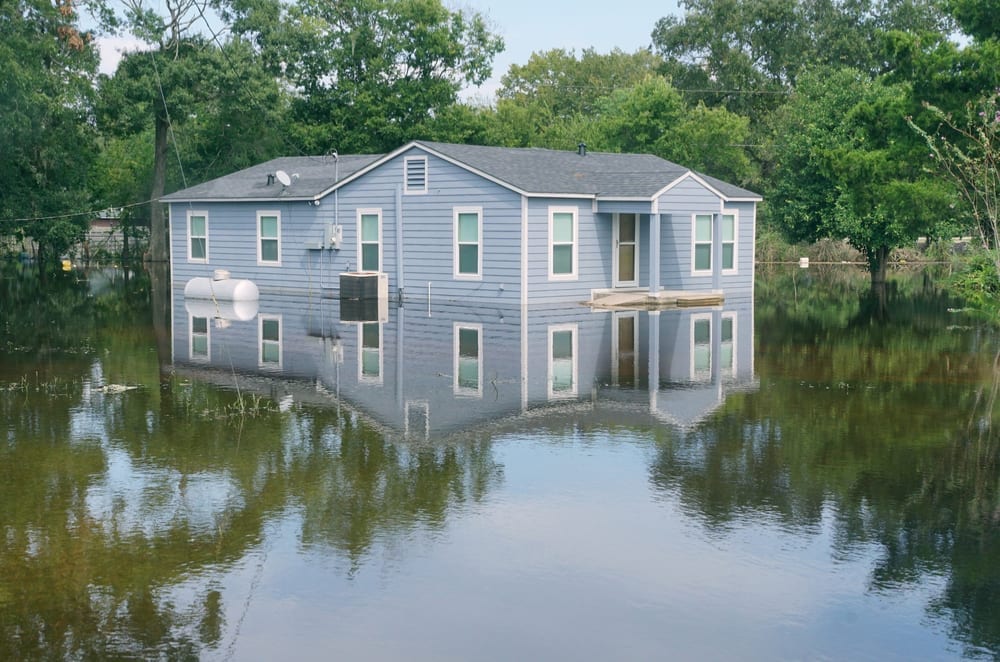Mother nature has the power to destroy in a matter of seconds. Severe storms cause an average of $28 billion in losses every year. While storm damage occurs in all states, some states are more prone to storm damage than others. We look at what states have the most storm damage.
The 9 States Most Prone to Severe Storm Damage
9. Alabama
Although Alabama has never had a category 4 or 5 hurricane, it has seen several category 3 hurricanes. When Hurricane Frederic hit Alabama in 1979, it was the largest hurricane on record with an eye 50 miles in diameter. In addition to hurricanes, tornadoes are also a major storm concern in Alabama. In 2011 alone, there were 120 tornado-related deaths in Alabama. The estimated property damage from 2006 to 2015 was nearly $5 billion due to severe storms.
8. Oklahoma
Oklahoma is infamous for both tornadoes and thunderstorms. The El Reno tornado hit central Oklahoma in 2013. At 2.6 miles, it was one of the biggest tornadoes ever. Tornadoes like the El Reno have caused more than $7 billion in storm damages across Oklahoma between 1997 to 2017.
7. Virginia
Although severe storms are rare in Virginia, hurricanes occur every two years. 2012’s Hurricane Sandy is the costliest storm to impact Virginia, resulting in 160 deaths and $70.2 billion in storm damage.
6. Kansas
According to the National Weather Service, Kansas has had an average of 60 tornadoes per year since 1950. Ice storms have increasingly affected the residents of Kansas in the last few years as well. The costliest ice storm occurred in 2007 in Kansas and affected as many as 260,000 people via power outages. It caused significant damage to the electrical infrastructure, resulting in $136.2 million in damages. In some areas, the power was out for two weeks and several inches of ice coated the roads.
5. North Carolina
Hurricane Sandy caused more than $70 Billion in damage to North Carolina. Cape Hatteras, Cape Fear, and Cape Lookout are the three most affected locations by storm damage in the state. Aside from hurricane damage, freezing temperatures have become a significant cause of storm damage.
4. Mississippi
The most expensive storm in Mississippi’s history is Hurricane Katrina. Causing more than $30 billion in storm damages, Hurricane Katrina affected more than 1 million residents, roughly one-third of the total population of Mississippi. Severe flooding is another major concern, resulting in an estimated $1.7 billion in damages over the last decade.
3. Louisiana
Louisiana is considered the center of hurricane alley and regularly sees significant storm damage. In the past 21 years, Louisiana property owners have faced more than $67.7 billion in storm damage. Hurricane Katrina alone resulted in $52.8 billion in storm damage in 2005.
2. Texas
At least 64 hurricanes have hit Texas since the 1850s, with significant hurricane damage occurring along the Texas coastline on average every six years. Between 2006 and 2015, the estimated property damage due to storms and hurricanes is more than $24.5 billion. In 2017, Hurricane Harvey caused $125 billion in storm damage alone. Hurricane Harvey ties Hurricane Katrina as the most expensive hurricane in history. In addition to hurricanes, severe thunderstorms and tornadoes are also common throughout the Lone Star state.
1. Florida
Florida is damaged by storms more often than any other U.S. state. With few exceptions, Florida has faced damage from at least one hurricane almost every year since 1851. The cumulative impact of storm damage in Florida has caused more than 10,000+ deaths and $191 billion in damages. In addition to Hurricane Irma and Hurricane, Florida is known for its severe hurricane and storm damage during the 2004 and 2005 hurricane seasons.
How Do You Clean Up Storm Damage?
From storm surge flooding to wind damage, it’s important to clean up storm damage as quickly as possible. Water will cause more damage the longer it sits. Additionally, mold can begin to grow in as little as 48 hours. To clean up storm damage, begin by extracting and drying out the water. Use either a buck or a pump to remove standing water. Then sop up the remaining water with towels or a mop. Always dispose of water outside and away from your home. Pouring water down the drain may cause additional flooding or sewage backups.
Once most of the water is gone, use fans and dehumidifiers to dry your home. Consumer-grade items will work, but you should consider renting equipment from a local supply company for faster drying times. Drying times will vary depending on the extent of the water damage and the area affected. Typically drying times take at least a day and may take as many as five days. After drying, disinfect the area with bleach to prevent mold, bacteria, and odors.
You may also need to remove and dispose of water-damaged materials and personal items. Use heavy-duty plastic bags to prevent contaminating other areas of your property while removing water-damaged items. After drying and disinfecting the area, you may need to make repairs, paint walls, refinish wood, or install carpeting.
Restoration Costs and Insurance Coverage for Storm Damage
Storm damage restoration costs will vary and your insurance may cover some or all of the damage. Review your insurance policy every year and contact your insurance agent if you have any questions. Groundwater flooding is usually not covered by standard homeowners insurance policies, but separate flood insurance is available. Flood insurance costs approximately $700 per year and most policies cover up to $200,000 in damages.
Need help cleaning up after a storm? Call 1-888-443-3110 now for a free quote on storm cleanup services.





